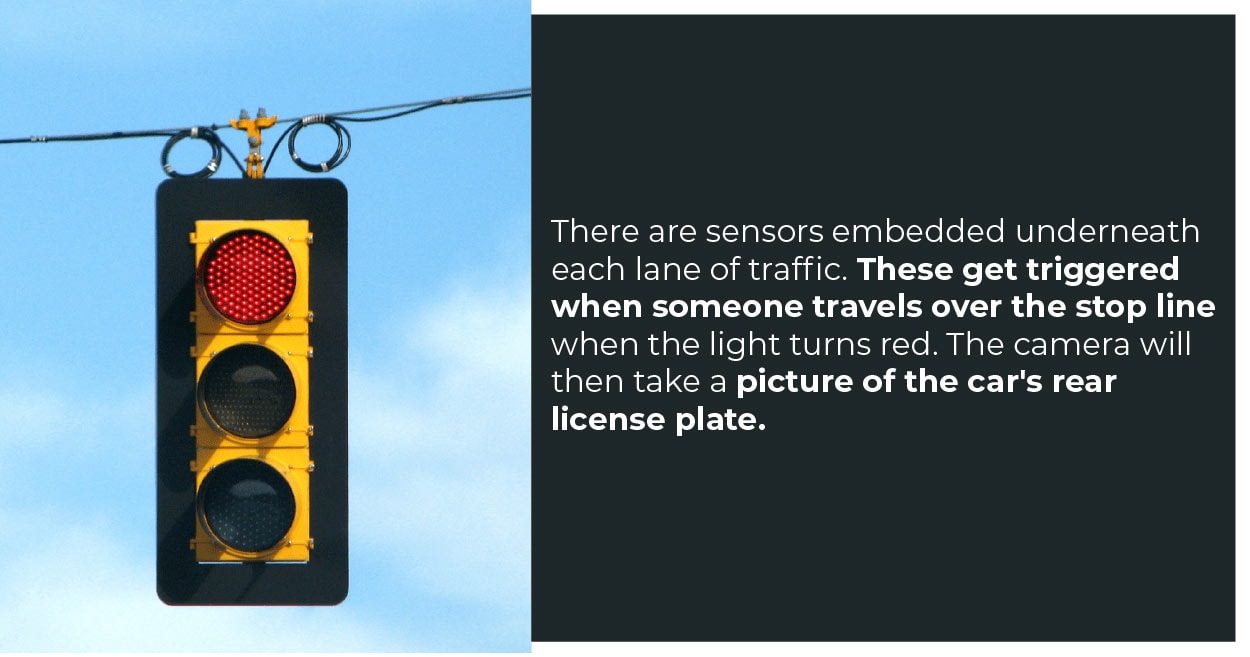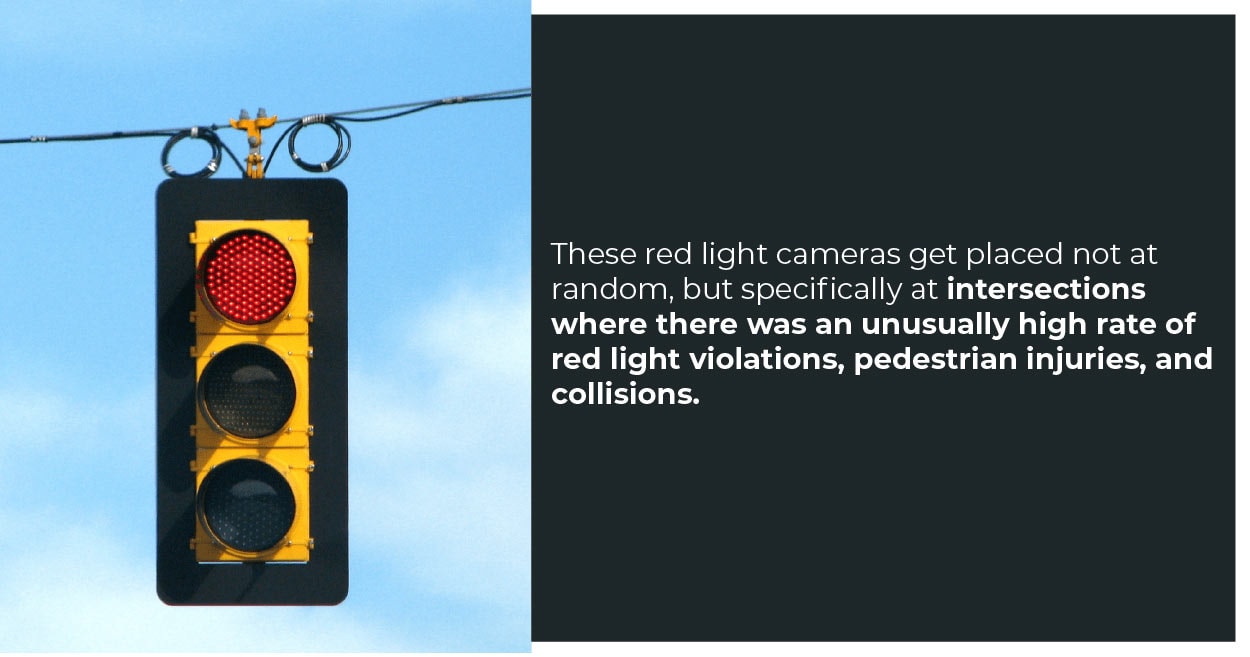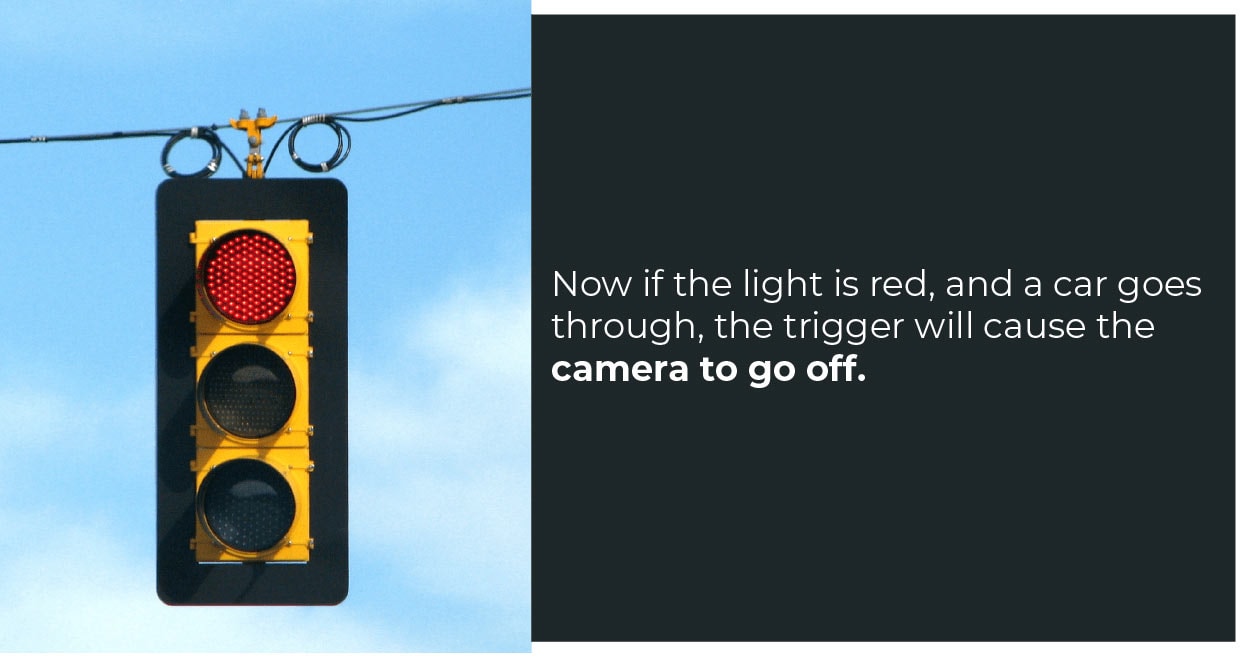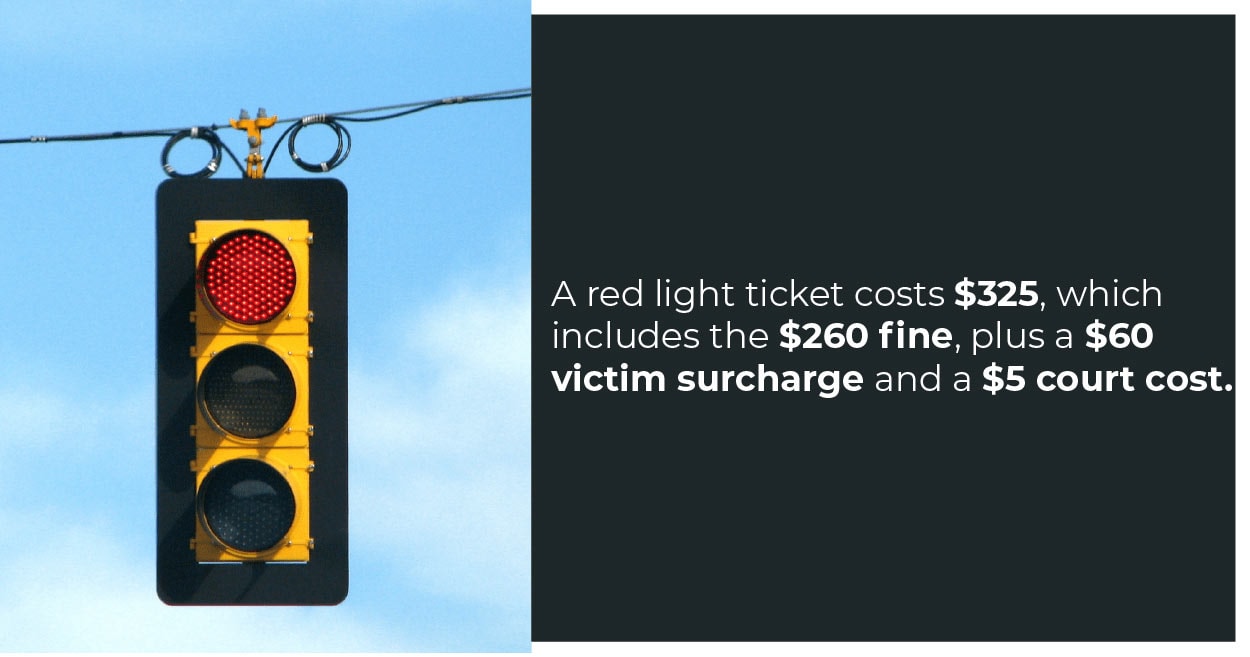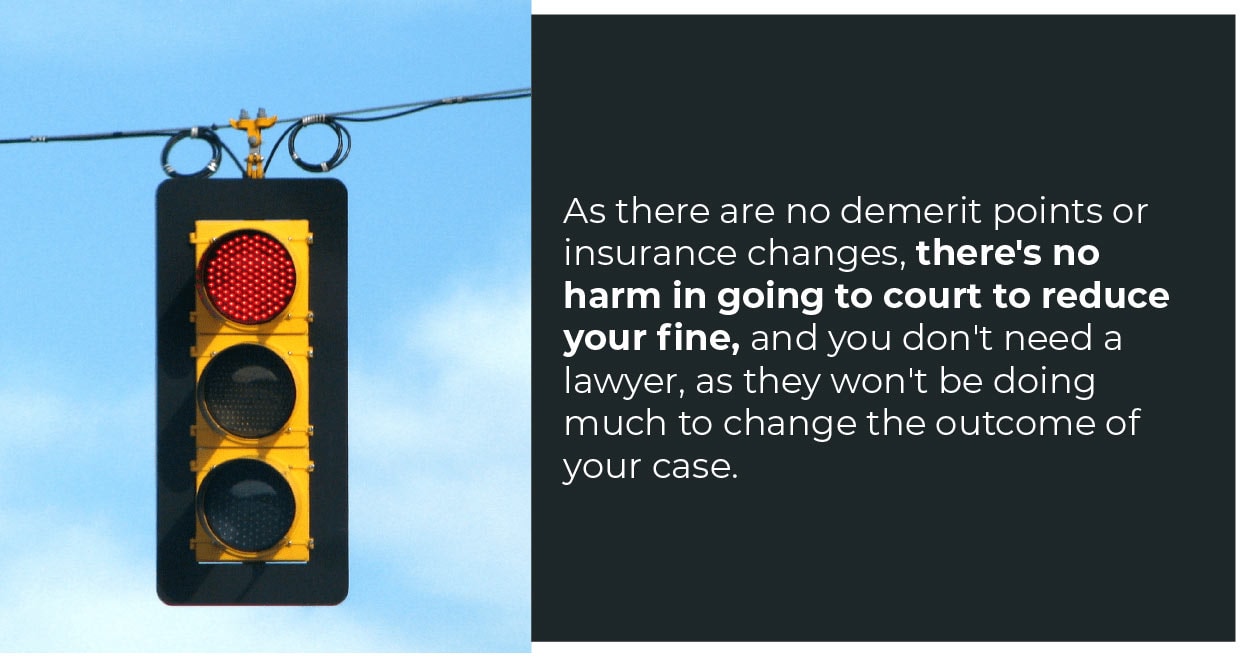Red-light running, as it's called, when you race across the intersection when the light turns red, is a serious issue in most communities in Canada.
You might not think that it's such a big deal when you run a red light. In fact, 31% of Canadians have admitted to having driven across a red light.
But running a red light could lead to collisions, accidents, and damage to property and life. Over 40% of fatalities in Toronto at signalized intersections got attributed to red-light running.
That's the reason red light cameras got installed in most major intersections in Toronto, Sudbury and Waterloo.
Read on to see what red light cameras are all about, and what a red light ticket means to you and your driving record.
What Are Red Light Cameras and How Do They Work?
Usually, the red light cameras get mounted on a standalone pole near the intersection, or they get mounted on the traffic light itself. A red light camera system costs about $150,000 and gets supplied by Trafficpax in Toronto.
There are sensors embedded underneath each lane of traffic. These get triggered when someone travels over the stop line when the light turns red. The camera will then take a picture of the car's rear license plate.
The red light cameras get triggered only if you enter the intersection AFTER the light has turned red. Red light cameras capture both left and right turn, and drivers coming from one specific direction only.
If the red light camera gets triggered, it will capture a picture of the rear license plate only, not the driver's face. After that, trained police officers examine the pictures taken to make sure that the driver was actually running a red light.
If deemed that the driver was in fact running a red light, a ticket gets mailed to the address on record for the car in question, i.e., the registered license plate holder.
Can I Spot a Red Light Camera?
Since the red light camera is meant as a deterrent and helps change driver behaviour, there are signs at all intersections that have red light cameras indicating their presence.
But not all traffic lights have red light cameras on them.
These red light cameras get placed not at random, but specifically at intersections where there was an unusually high rate of red light violations, pedestrian injuries, and collisions.
Speed cameras are the same as red light cameras, except instead of capturing a rear license plate number when violating red lights, the speed cameras capture the rear license plate when the driver violates speed laws.
One enforces red lights, and the other enforces speed limits. Also, speed cameras are placed in the less populated areas, whereas the red light cameras are placed in busy intersections.
What Is Trigger Technology?
As mentioned earlier, sensors or induction loop triggers (a length of electrical wire) get placed under the road near the stop line. These wires get laid down in a couple of rectangular loops.
How Does It Trigger the Camera?
The magnetic field induces an electric voltage in the electrical wires, and the meter in the system constantly monitors the inductances of the system.
When the inductance changes significantly, that's how the system knows that a car has passed over the loop. That's what triggers the camera.
There is a video loop trigger as well — in this system, a computer checks the video feed of the intersection.
It is programmed to check for specific changes in the feed that indicate that a car is moving through the intersection. Now if the light is red, and a car goes through, the trigger will cause the camera to go off.
How Do You Know If a Red Light Camera Took Your Picture?
Sometimes you will notice a flash when you pass by the intersection that indicates that your picture got taken, but on bright sunny days, this flash won't be noticeable.
Of course, you will know the red light camera took your picture when you get a notice in the mail weeks later that you have a red light violation.
Where Are the Red Light Cameras in My City?
The following cities have red light cameras on certain busy intersections.
You can tell if the intersection has red light cameras by checking for prominent signs at said intersection. But you can also check the city's website for more detailed information.
TORONTO
Currently, 300 red light cameras in Toronto are functioning in various municipalities. You can find a list of them on the City of Toronto's website. In 2018, Toronto issued nearly 90,000 red light camera tickets!
OTTAWA
The city of Ottawa has a total of 53 red light cameras. An interactive map of the red light cameras in Ottawa is on the city's website.
SUDBURY
The city of Sudbury has 7 red light cameras and a list of them and more details can be found here.
LONDON
The city of London has 10 red light cameras located at various intersections. The list is on the city's website here.
WATERLOO
The cities of Waterloo, Cambridge, and Kitchener have a total of 15 red light cameras. The list of intersections with red light cameras can be found here.
HAMILTON
The city of Hamilton has 34 red light cameras at various locations working around the clock. The list can be found here.
How Much Can I Be Fined For?
A red light ticket costs $325, which includes the $260 fine, plus a $60 victim surcharge and a $5 court cost.
If you get caught by a police officer while running a red light, the offense gets treated completely differently, and you might end up with demerit points. A red light ticket acts more like a parking ticket than a traffic one.
How Long Does a Red Light Ticket Take to Come In the Mail?
It can take as little as two weeks or as much as eight weeks to get your red light ticket in the mail. On average though, the red light ticket arrives at your house in 4 weeks.
What About Demerit Points?
The good news is that the red light camera ticket in Ontario that you receive does not result in demerit points. Phew!
Does It Affect Your Insurance?
It also won't affect your insurance, which is a big relief.
Be aware though that if you end up causing a collision due to red-light running, you will end up with a hefty fine, further charges, and an increased auto insurance premium. It's advisable to avoid red light running!
What If I Am Driving Someone Else's Car?
The ticket goes to the address on record. This means that it doesn't matter if you let your sister, uncle, or friend borrow the car. If they ran the red light in your car, the ticket will be in your name. And there's no way to transfer it.
Can I Fight a Red Light Camera Ticket in Court?
Yes, you can absolutely fight a red light camera ticket in court in Ontario. And most people do end up going to court to fight it since it results in a reduced fine.
As there are no demerit points or insurance changes, there's no harm in going to court to reduce your fine, and you don't need a lawyer, as they won't be doing much to change the outcome of your case.
This is not the case if you have had a collision or hit a pedestrian when running a red light. Then, it's in your best interest to get a lawyer and try to reduce the sentence as much as possible.
If you have various driving charges to deal with in court, you can request an early resolution meeting with a prosecutor for up to 6 of these charges. You can apply for this request online, and the link for Toronto is here.
Best Way to Avoid Running Red Lights
As you can imagine, the ideal situation would be to avoid running red lights every time all the time. But how do you do this? We have four tips below.
Do Not Drive Distracted or Drowsy
Always ensure that you are fully rested when driving, as being sleepy or drowsy increases your chances of unintentionally running a red light. Stop by the side of the road or get a coffee if you feel drowsy or sleepy.
Control Your Speed
Racing through intersections as if the devil were chasing you (or stunt driving) is no way to drive safely. Control your speed by following the set speed limits of each road. They get placed there for a very good reason.
Understand the Yellow Light Laws
The yellow light is there to WARN you that the red light is about to appear. Some people take it as a warning to speed up, but in fact, the yellow light is there to tell you to slow down.
Understand that, and follow the warning that the yellow light is trying to give you.
Understand the Dilemma Zone
The dilemma zone is a point at the intersection where drivers should decide whether they should stop for the yellow light or keep going. If you make the wrong decision, you could end up in a rear-end or right-angle collision.
There's a lot of research on this online, so spend some time understanding the dilemma zone and apply it to your own driving.
Get the Coverage You Want at the Best Rates
Get quotes in minutes and save on the best insurance policies.
Get QuotesStop At Red Lights — They Are There for a Reason
Red light cameras might act as a deterrent, but they shouldn't be necessary for you to realize that red lights are there for a reason. They aren't placed there as an inconvenience to you, but to move traffic safely.
Driving, especially in congested traffic, can be a pain in the behind. We get it. But putting your life at risk or your loved ones' who might be in the car with you, is no way to get 'home' faster.
If you wish to save time, then instead of running a red light, think about saving time on searching for insurance, mortgage, and credit card products. Check out Insurdinary's auto insurance quotes today!


